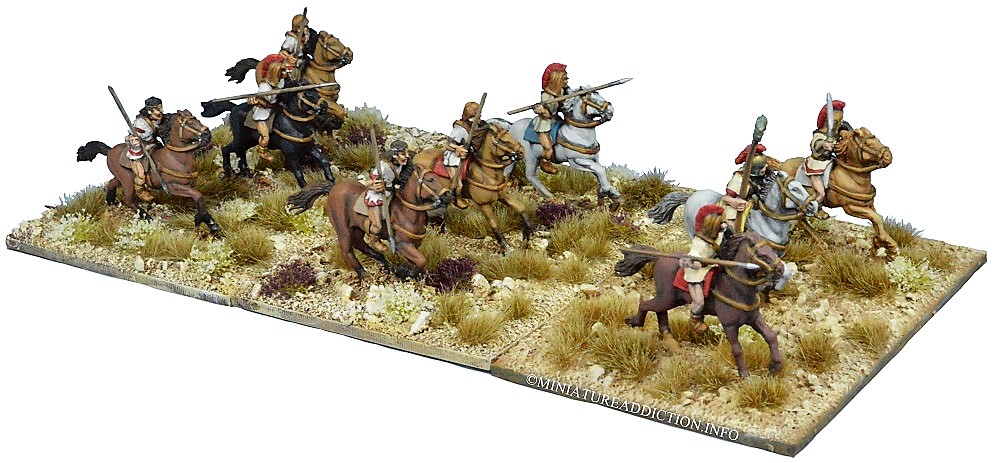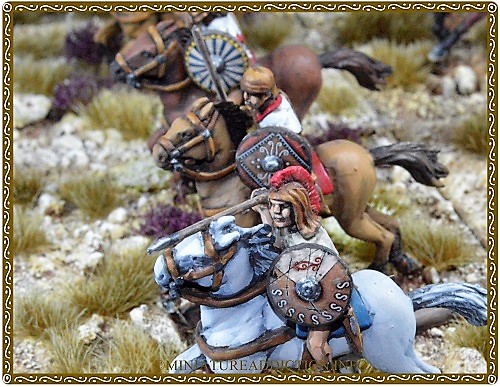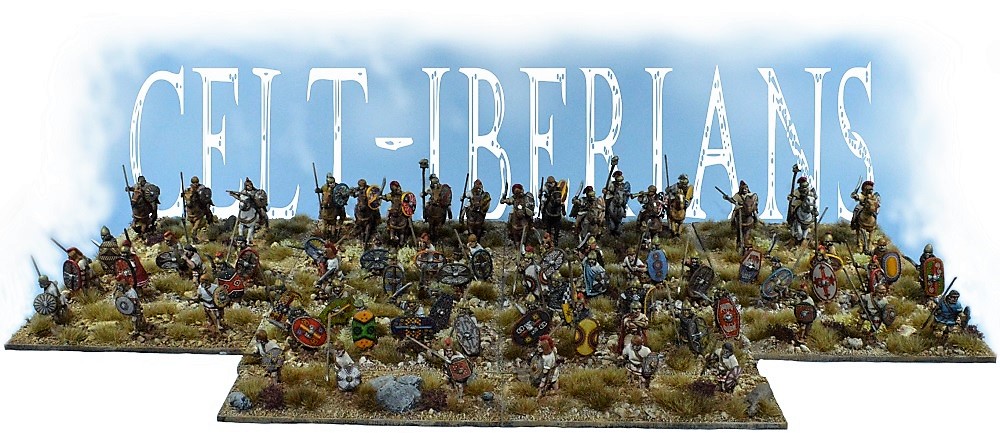
Introduction
This army is based on the collection of Iberian and Celtic people who lived in the north-eastern and central plateau of the Spanish peninsula around the time of the Punic wars. Collectively known as Celt-Iberians this ethnic group included tribes such as the Arevaci, Pelendones and Berones. Famed for their fighting capabilities, Spanish warriors of this time were already serving as mercenaries throughout the Mediterranean. In war gaming terms not only will the figures shown here form their own fighting force, but elements of this army will readily slot into both the Carthaginian and Republic Roman armies I have previously painted.
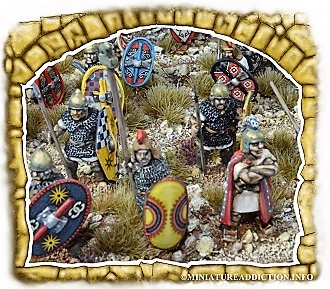
If you are new to this historical period or indeed this genre of war gaming you will find Celt-Iberian armies are generally referred to (in the rule systems I’m familiar with) as war-band armies. Unlike the Roman or Greek troops of this era, who fought in drilled formations, war-band armies are more akin to large unruly mobs who are hard-hitting but difficult to control once the fighting is under way.
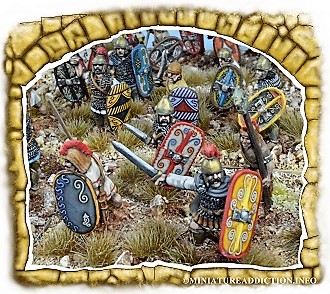
Medium Cavalry With Attached General/s
In order to maximize my investment in both time and money (limited resources for me) I like to keep things as simple and interchangeable as possible when collecting any army. To this end I have included command groups in each of the cavalry elements pictured here. This allows them to take the field as either ordinary units or with attached generals. With a view to add even more flexibility to these units each base contains a different number of models. This allows me to assign individual command roles to each of the respective stands, be it ordinary cavalry, attached general or attached army commander.
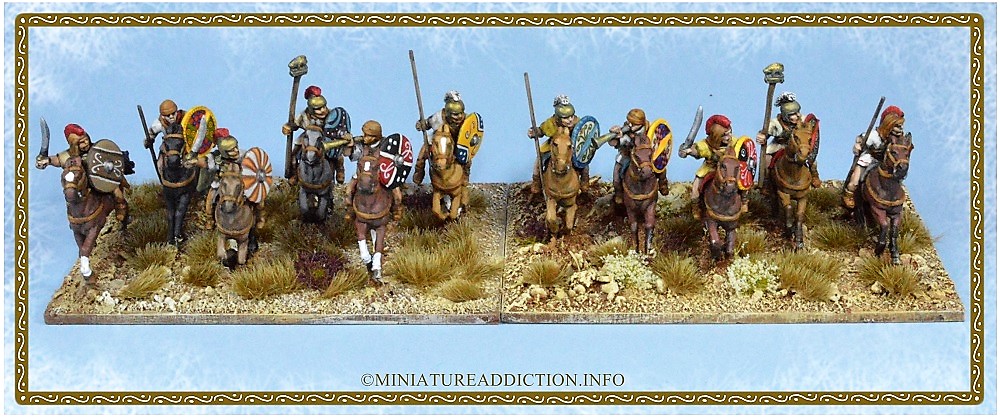
All of the cavalry figures pictured here are from Crusader’s excellent 28mm ancient Spanish range. Mounted on large (3mm thick) laser cut plywood they are primarily based for the Impetus rule system although I plan to give big base DBA a go at some stage. The ribbed shields with Little Big Man transfers come from A&A Miniatures Celtic range. While those shields with a round central boss were supplied with the Crusader cavalry packs and are all hand painted.
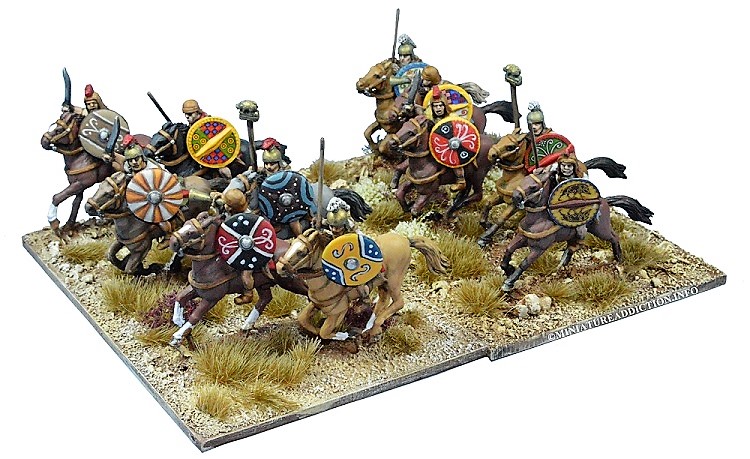

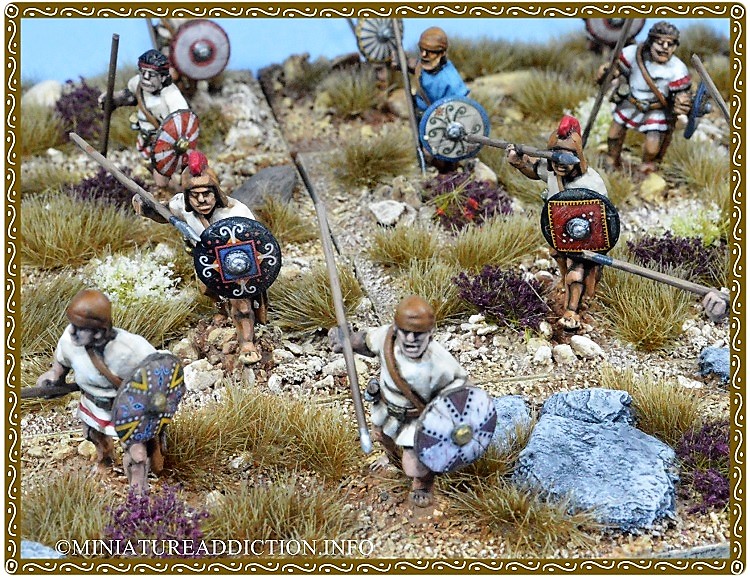
Skirmishers
Often referred to as Caetrati (after the small round shields they carry) these javelin armed skirmishers are more numerous and have slightly better stats in Impetus than their Roman and Libyan counterparts. Thus far I have completed seven units of skirmishers and like the cavalry above these figures were also sculpted by Mark Sims for Crusader Miniatures. The Little Big Man transfers used on these models are supplied on sheets containing sixteen individual patterns all of which have pre-punched holes to match the shield’s central boss.
Light War Band
The sixteen stands of light war band pictured below make up the bulk of this army. Although fast moving and hard-hitting these troops generally suffer from poor discipline making them difficult to control, prone to spontaneous charges and hard to rally once they have become disordered. For variety I used a mixture of sword and javelin armed infantry packs from Crusader’s Iberian, Lusitian and Celt-Iberian figure ranges. Weighting certain elements slightly in favour of common armour or weapon types coupled will additional command figures help to visually identify any unit I may want to upgrade when designing a particular army list.
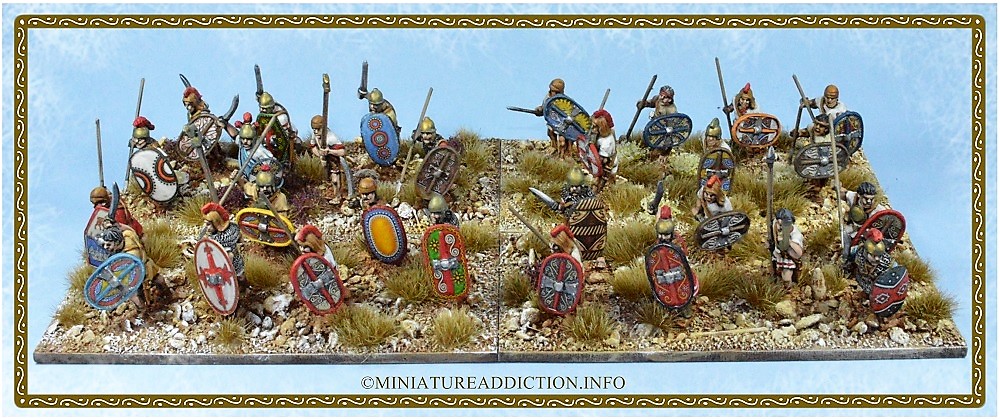
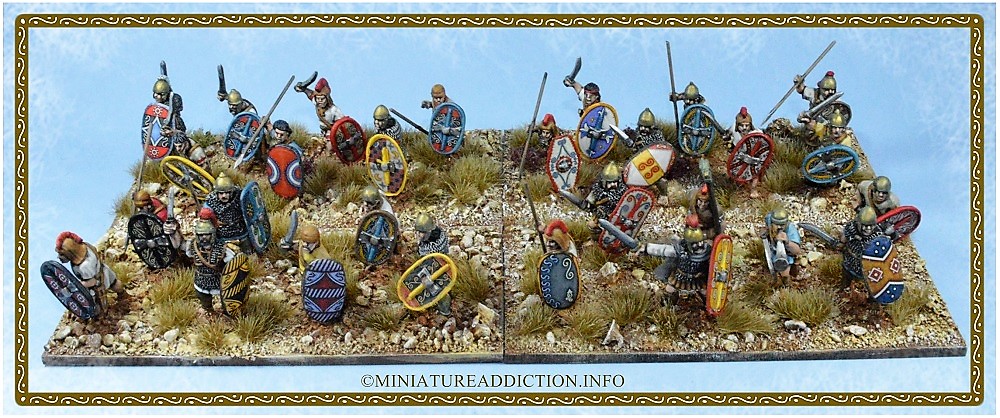
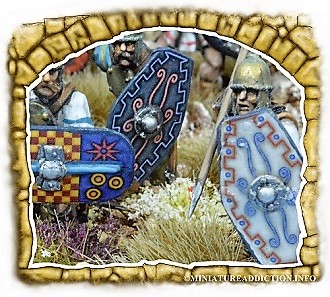
Shield Types
All shields associated with these war-bands are a random mixture of patterns from three manufacturers. The various Celtic designs (left) come from A&A Miniatures, while the larger oval (Scutari) shields (right) are from Gripping Beast (no boss) and Crusader (boss). The transfers are as usual from Little Big Man Studios.
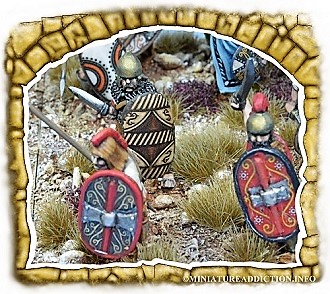
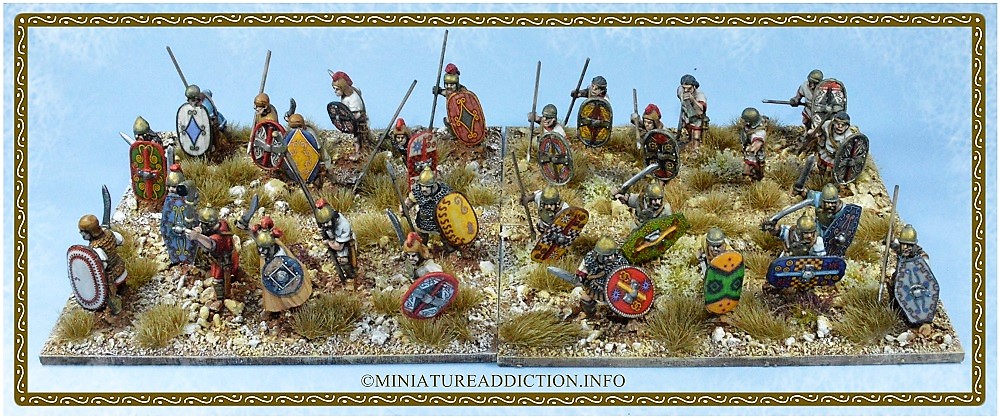
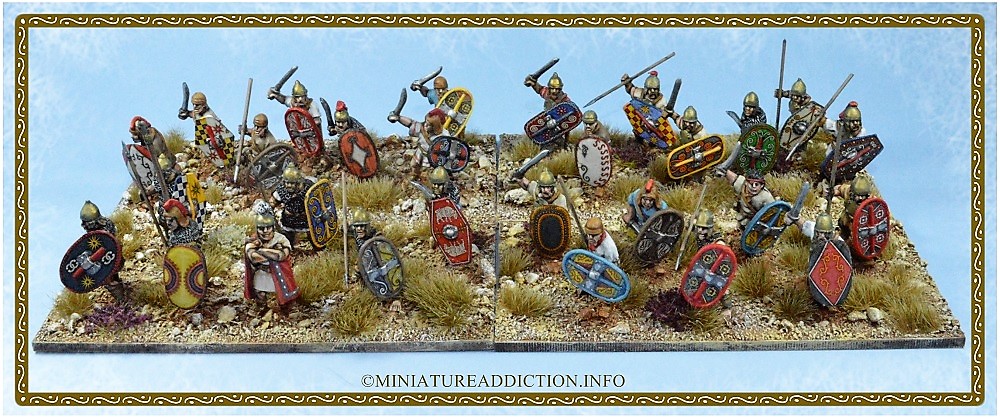
Basic Painting Info
When painting a new army I usually record what colours I have selected in a simple spreadsheet not unlike the example shown here (right). I have found this to be incredibly helpful when returning to add units at a later date. Generally I even include what paints and flock was used on the bases as it all helps maintain the uniformity of the army. Sadly some of my early armies didn’t make the spreadsheet and as a consequence sport a multitude of slightly different coloured units and basing styles.
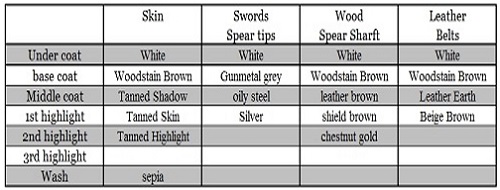
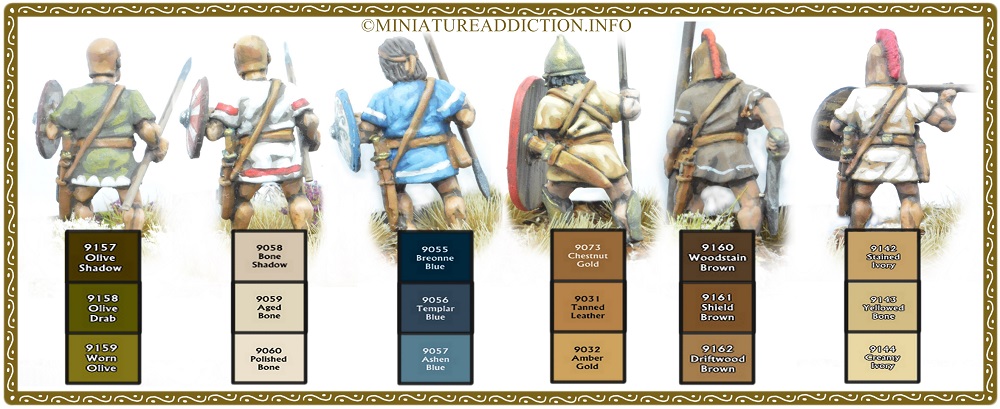
Pictured above are some examples of the colour combinations I chose for the vast majority of Celt-Iberian tunics in this army. All the paints are from Reaper’s core colours master series range, most of which can be bought as prepackaged paint triads. From what I have read these troops predominantly wore white tunics with red bands around the cuffs, collar and base. Consequently, most of the army is painted using the colour combinations detailed on figures two and six with the odd different coloured tunic added in for variety.
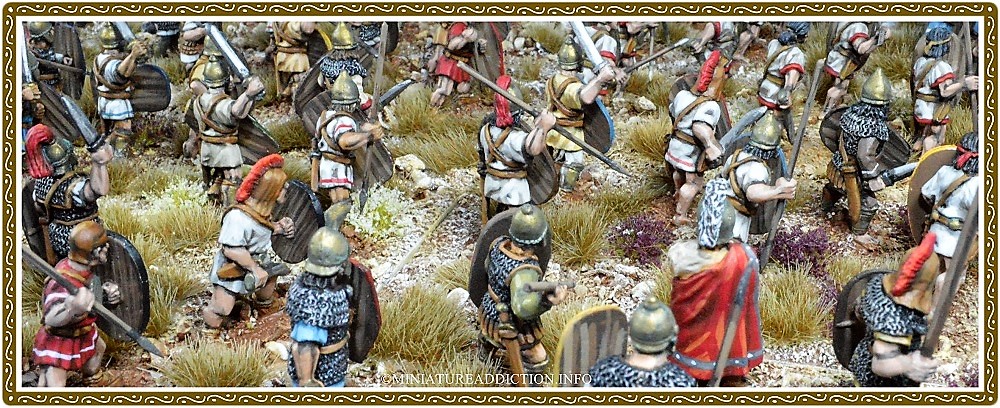
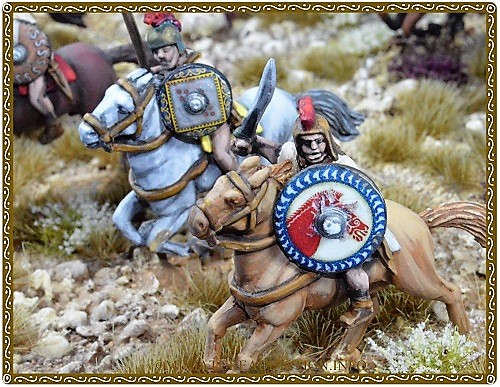
Light Cavalry
Lastly three elements of light cavalry armed with bucklers (Caetrati) and javelins complete this force as it currently stands. Like the rest of the army these unarmoured horsemen are from Crusader’s 28mm metal ancient Spanish range. One stand is depicted as a command element to allow the option of an attached general if desired. No doubt I will add some more elements to the army once I get a few games under my belt and gain a better understanding of the rules and how this army performs on the table top. For a quick look at how the Celt-Iberians stacked up against my Romans in their first game click this link Rome vs Spain
